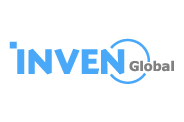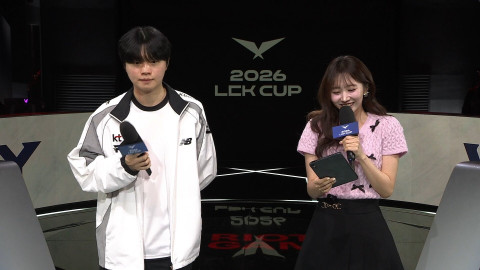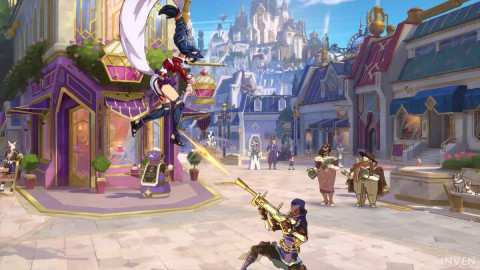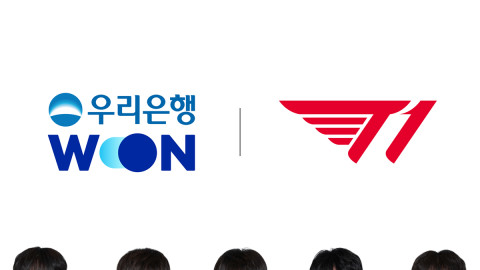
ClashRow, offered by the NFT gaming platform Skyplay, is a mobile strategy game where players aim to develop their own territories while attacking others to climb the rankings. In addition to various PvE content such as dungeons, defense modes, and quests, ClashRow also provides NFT trading and token swapping features, with a unique paid structure for in-game activities, including character gacha.
Skyplay prides itself on being the most user-friendly blockchain game, and indeed, ClashRow's blockchain technology implementation is designed to be relatively accessible and enjoyable, even for those new to Web3.
The content of ClashRow can be divided into three main categories: Construction Management Simulation, where players manage their territories; Player versus Player (PvP) mode, where they attack other players' territories; and PvE content like adventures, defense training, and the Lost Temple.

In the Construction Management Simulation, ClashRow shares similarities with the pioneering mobile strategy game, Clash of Clans. As mentioned earlier, players construct various buildings centered around the Town Hall, which provides various facility benefits for their territories.
Buildings are divided into three categories: resource facilities that increase resource generation and storage, defense facilities to protect territories from invasions, and support facilities that aid in territory development.
As with most territory-focused strategy games, the time players invest in their territories greatly influences their performance in other content. For example, the maximum capacity of resources used to summon minions in other players' territories or during dungeon raids depends on the level of certain facilities within their territories.

Hence, even if a player possesses high-level minions, without proper territory development, they may lack the summoning resources needed to utilize these minions effectively. Similarly, lacking well-equipped defense facilities in their territories could make it difficult to defend against AI minions' attacks during certain PvE content.
Since all content in the game unlocks sequentially based on the Town Hall level, the development of territories serves as the foundation for all other gameplay. To raise the Town Hall level, players must have the necessary buildings constructed. As they progress further, more resources are required for building expansion.
To construct buildings within their territories, players need both resources and time. Therefore, if they prefer not to spend money to expedite the process, managing resources diligently and investing effort in building structures would be advisable. Understanding the system should be relatively straightforward for those experienced in construction management-focused strategy games.


PvE content such as Adventures and the Lost Temple involves engaging in battles with AI using nurtured minions. Minions can be obtained by clearing specific maps during adventures or through in-game gacha, and players can level them up by obtaining duplicates. However, continuous minion leveling requires upgrading specific facilities within their territories.
Minions are classified into four grades: Common, Uncommon, Rare, and Legendary. Moreover, they are further categorized into roles like Tanks, Warriors, Archers, Magicians, Healers, and Siege units. As expected, higher-grade minions showcase more powerful performances but consume higher summoning power.
Notably, the performance of Legendary minions indeed surpasses that of Normal minions, making it more efficient to draw powerful High-Cost minions first before using the remaining resources to draw suitable Low-Cost minions.

Upgraded minions find use in various content, from PvE like Adventures and the Lost Temple to PvP. Adventures involve attacking AI territories based on the opponent's structure, which allows players to alter their minion composition for more effective strategies. The Lost Temple offers the opportunity to conquer powerful AI territories guarded by dungeon protectors, granting players access to hero fragments and more.
Finally, PvP content involves attacking other players' territories. PvP operates in a league format where players' ranks are determined by their activity during the league period, leading to rewards afterward. To participate, players register their territories in the Defense Square and find opponents to attack. As players can scout opponents in advance and determine their territories’ strengths, careful consideration is crucial depending on the strength of your own minions.
It's important to note that registering in the Defense Square makes players vulnerable to attacks, but no actual damage occurs to their territories. Instead, their trophies, which influence rankings, decrease when attacked. For higher ranks, not only must players invest in minion nurturing, but they should also ensure that their defense facilities are solid.


ClashRow's PvP league system, though not revolutionary in terms of combat mechanics, offers a unique seasonal reset approach. At the end of each season, most aspects reset, except for Chronolite, CRTL, the nickname, owned heroes, hero SP, hero fragments, hero summon tickets, owned minions, and minion summon tickets. In-game resources such as gold, Blue Gems, Elheim’s Orbs, consumables, etc., are reset, as well as builders, buildings, content progression, and league records.
Another differentiation is the combination of the league system and Web3. At the end of each season, users gain CRTL depending on their ranking from the previous season. CRTL serves as the utility token in ClashRow and can be exchanged with the in-game currency, Chronolite, or the Near Protocol token. Conversely, players can convert Near Protocol tokens into Chronolite for in-game investments.

Chronolite is a significant in-game currency used for various purposes, such as instant building construction or purchasing various package items from the store. While players can acquire Chronolite partially through daily and weekly quests and adventures, since it plays a crucial role in territory development, frequent participation in rankings or exchanging Near Protocol tokens may be necessary for more frequent usage.
Overall, while the seasonal reset system in ClashRow offers advantages, core resources like Chronolite and gacha content remain unaffected by the reset. Therefore, players who have climbed the ranks and accumulated non-resetting resources from previous seasons can efficiently prepare for the next season, potentially aiming for higher ranks.

The seasonal reset is not necessarily detrimental to new players either. As territories at the beginning of a season are not perfectly developed, even free-to-play users can invest time reasonably to aim for lower ranks.
However, as the reset does not wipe out previous investments, bridging the gap between new and existing players rapidly can be challenging. Moreover, due to the structure of such strategy games, those considering a P2E approach may find early investment necessary.
If you start ClashRow purely as a strategy game, it may lack in terms of balance and quality. However, the seasonal rank system based on Web3 integration and NFT trading for hero management supplies enough motivation to compete. Its success as an infinite competition game will largely depend on how it bridges the gap between new and existing users as the seasons progress.
Sort by:
Comments :0







